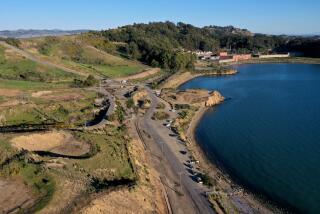Suit Over L.A. Port Terminal Rejected
- Share via
A federal judge has dismissed a lawsuit by a Rancho Palos Verdes community activist who alleged that the Port of Los Angeles misappropriated tens of millions of dollars in government money to construct a massive cargo terminal for Maersk Inc., the world’s largest shipping line.
In his ruling, U.S. District Court Judge S. James Otero wrote that he dismissed Stanley D. Mosler’s case because the plaintiff was no longer represented by an attorney and thus lacked the standing to litigate a case on behalf of the United States government. Mosler also listed the state of California and himself as co-plaintiffs.
“Laypersons are not subject to the same ethical considerations that govern the conduct of attorneys and lack the necessary skills to prosecute complicated” false-claims cases, Otero wrote in his ruling, filed last week and entered into the record Tuesday. “Because the United States is the real party in interest, a judgment obtained by a relator [plaintiff] may adversely affect the United States’ right” to bring future actions in the case.
Mosler said he had hoped that his case would be decided on its merits. He said his attorney bowed out of the case 18 months ago when he realized the federal government would not intervene and the case would be too costly to pursue.
“I am disappointed,” he said. “The judge could’ve made this decision 18 months ago. The moral of the story is crime pays and it’s hard to get redress.”
Mosler alleged that port officials had engaged in a “bait-and-switch” maneuver when they shifted plans to relocate crude oil and other hazardous shipments to a man-made island that would be built away from populated areas to improve harbor safety. Instead, Mosler said in his suit, port officials decided to turn the islands into a massive cargo terminal for Maersk.
At issue was whether the port violated federal agreements to build the so-called energy island project and misappropriated $108.6 million in federal money and nearly $1.1 billion in harbor revenue to construct the giant terminal.
Community and city officials had long sought to relocate terminals where hazardous cargo is unloaded to protect the community in the event of an accident. In 1976, nine people were killed and 58 injured when the tanker Sansinena exploded at the Union Oil Terminal.
In their defense, port officials said their plans for energy island changed because there was no market for oil and petroleum terminals. Tenants resisted the idea as too costly, while crude oil and other hazardous shipments were declining at the time.
Officials also said that 15 of the more than 500 acres of the man-made island were still available for hazardous shipments. They also argued that the port’s agreement with the federal government also did not specify how the island would be used.
More to Read
Sign up for Essential California
The most important California stories and recommendations in your inbox every morning.
You may occasionally receive promotional content from the Los Angeles Times.










